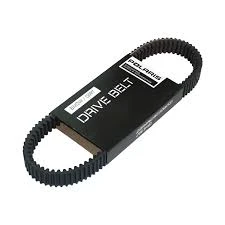- Arabic
- French
- Russian
- Spanish
- Portuguese
- Turkish
- Armenian
- English
- Albanian
- Amharic
- Azerbaijani
- Basque
- Belarusian
- Bengali
- Bosnian
- Bulgarian
- Catalan
- Cebuano
- Corsican
- Croatian
- Czech
- Danish
- Dutch
- Afrikaans
- Esperanto
- Estonian
- Finnish
- Frisian
- Galician
- Georgian
- German
- Greek
- Gujarati
- Haitian Creole
- hausa
- hawaiian
- Hebrew
- Hindi
- Miao
- Hungarian
- Icelandic
- igbo
- Indonesian
- irish
- Italian
- Japanese
- Javanese
- Kannada
- kazakh
- Khmer
- Rwandese
- Korean
- Kurdish
- Kyrgyz
- Lao
- Latin
- Latvian
- Lithuanian
- Luxembourgish
- Macedonian
- Malgashi
- Malay
- Malayalam
- Maltese
- Maori
- Marathi
- Mongolian
- Myanmar
- Nepali
- Norwegian
- Norwegian
- Occitan
- Pashto
- Persian
- Polish
- Punjabi
- Romanian
- Samoan
- Scottish Gaelic
- Serbian
- Sesotho
- Shona
- Sindhi
- Sinhala
- Slovak
- Slovenian
- Somali
- Sundanese
- Swahili
- Swedish
- Tagalog
- Tajik
- Tamil
- Tatar
- Telugu
- Thai
- Turkmen
- Ukrainian
- Urdu
- Uighur
- Uzbek
- Vietnamese
- Welsh
- Bantu
- Yiddish
- Yoruba
- Zulu
Zář . 28, 2024 21:01 Back to list
Understanding the Connection Between Alternators and Serpentine Belts in Your Vehicle
Understanding the Alternator and Serpentine Belt Key Components of Your Vehicle
The alternator and serpentine belt are two essential components of any modern vehicle's engine system. Understanding their functions, importance, and maintenance can go a long way in ensuring optimal vehicle performance and longevity. This article delves into the roles these components play and offers insights on how to care for them.
The Role of the Alternator
The alternator is a critical electrical component in a vehicle, responsible for converting mechanical energy from the engine into electrical energy. This electrical energy powers the vehicle's electrical systems, such as the headlights, dashboard lights, and audio systems, and it also charges the vehicle's battery. Typically driven by the engine's crankshaft, the alternator uses electromagnetic induction to produce electricity as it spins.
As the engine runs, the alternator generates current, which is fed to the battery and other electrical components. A properly functioning alternator is crucial because if it fails, the battery will eventually deplete, leading to a complete shutdown of electrical systems and leaving you stranded. Common signs of alternator failure include dimming headlights, electrical malfunctions, and a warning light appearing on the dashboard.
The Function of the Serpentine Belt
The serpentine belt, often referred to as the drive belt, is a long, continuous belt that drives multiple peripheral devices in the engine, including the alternator, water pump, power steering pump, and air conditioning compressor. Unlike older vehicles that may have used multiple belts for different functions, most modern vehicles utilize a single serpentine belt due to its efficiency and ease of maintenance.
The serpentine belt is designed to withstand high levels of tension and heat. It is typically constructed from a durable, flexible rubber composite, featuring grooves to improve grip on the pulleys it drives. As the engine runs, the serpentine belt rotates around these pulleys, transferring power to the supported components.
Importance of Maintenance
alternator serpentine belt

Both the alternator and serpentine belt require regular maintenance to ensure they function correctly. A worn or damaged serpentine belt can slip or break, leading to various issues like overheating (if the water pump is driven by the belt) or loss of power steering. It's crucial to check the serpentine belt for signs of wear, such as cracks, fraying, or glazing. Manufacturers typically recommend inspecting the belt every 30,000 to 60,000 miles and replacing it as needed.
The alternator, while generally durable, can also succumb to wear and tear over time. Regular checks of the alternator, including its wiring and connections, can help detect problems early. If you notice any unusual noises, such as grinding or whining, or if the battery warning light illuminates on the dashboard, it may indicate an issue with the alternator that requires immediate attention.
Signs of Trouble
Here are some indicators that your serpentine belt or alternator may need attention
1. For the Alternator - Dashboard battery warning light. - Dimming or flickering headlights. - Electrical accessories malfunctioning. - Unusual noises coming from the alternator area.
2. For the Serpentine Belt - Squealing or squeaking noises, particularly during startup. - Visible signs of wear, such as cracks or frays. - Loss of power steering or overheating due to water pump failure.
Conclusion
Understanding the roles and maintenance needs of the alternator and serpentine belt is crucial for any vehicle owner. Regular inspections and timely replacements can prevent costly repairs and ensure that your vehicle operates smoothly. Investing time in proper care for these components will significantly enhance your vehicle's reliability and lifespan, making your driving experience safer and more enjoyable. Always consult your vehicle’s owner manual for specific maintenance intervals and tips, and don't hesitate to seek professional advice if you notice any signs of trouble.
-
Korean Auto Parts Timing Belt 24312-37500 For Hyundai/Kia
NewsMar.07,2025
-
7PK2300 90916-T2024 RIBBED BELT POLY V BELT PK BELT
NewsMar.07,2025
-
Chinese Auto Belt Factory 310-2M-22 For BMW/Mercedes-Benz
NewsMar.07,2025
-
Chinese Auto Belt Factory 310-2M-22 For BMW/Mercedes-Benz
NewsMar.07,2025
-
90916-02660 PK Belt 6PK1680 For Toyota
NewsMar.07,2025
-
drive belt serpentine belt
NewsMar.07,2025

